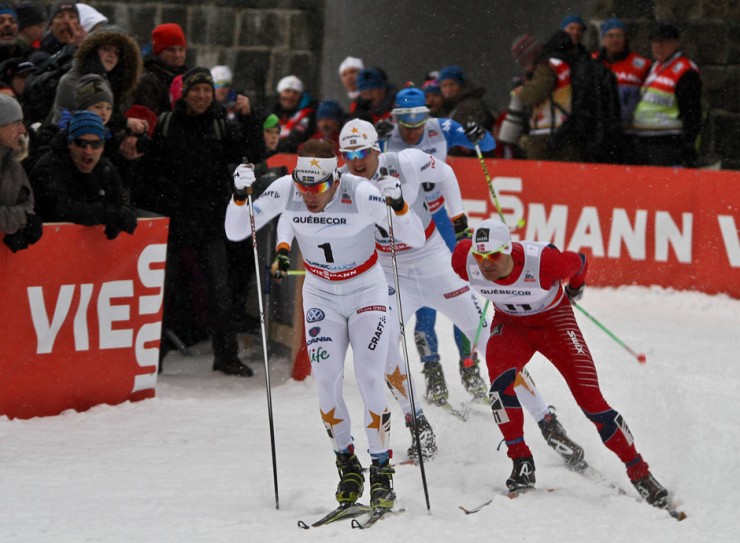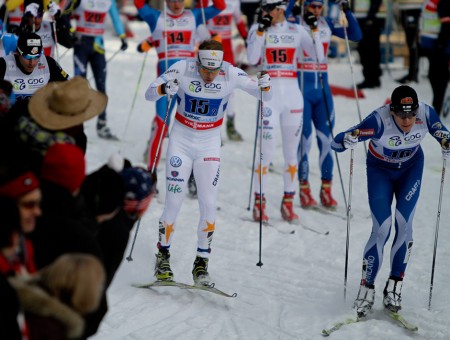
QUEBEC CITY — It may be surprising, but for one of the best sprinters in the world, speed can be too much of a good thing.
Coming off a strong win in the Quebec City freestyle sprint Emil Jönsson (SWE) is feeling in top form and with two Sprint Cup titles and 14 World Cup wins it would seem he doesn’t have much more to prove.
On the highly competitive World Cup circuit, however, nothing can be taken for granted. Today’s winner can be struggling to crack the points a week later.
So like most everyone else, Jönsson, already known for possessing unrivaled top-end speed, is looking to get better.
In an interview following his victory on Saturday, Jönsson told FasterSkier that his greatest asset is also a weakness.
The improbably fast turnover that Jönsson can engage over short distances is often inefficient and the Swede is working “to go a little slower,” developing a longer smoother stride.
“Be a little bit more efficient in the technique, that is my key point of being better,” Jönsson said.

He added that he has been improving, and will be doing more distance races this season as part of the process.
He has already morphed from a pure sprinter into a solid, if not spectacular, World Cup distance threat.
In Gällivare, Sweden two weeks ago, Jönsson scrambled for the team that placed second in the 4×7.5k, relay, and he placed 9th in the Kuusamo mini-tour.
His quickness comes naturally, but he said he has trained it as well. In Quebec City he used it to good effect, breaking off the line in position to control his spot and execute his race plan.
“I have a little bit up to the best,” Jönsson said of his technique, adding, “It feels good to still have something to improve.”
Time to Learn From the Americans
Jönsson was thrilled to see Kikkan Randall and the rest of the American women performing at such a high level.
The relationship between the Swedish and American national teams has been well-documented, with friendships, shared training camps, and a strong mutual respect.
But beyond the personal connections, Jönsson said that traditional skiing powerhouses should pay attention to what is happening on the west side of the Atlantic.
The U.S. he explained, may be “in total focus” in training and racing, but outside of competition they know how to relax.
“I think we have a little bit to learn from that in Norway and Sweden maybe,” Jönsson said. “We take it a little bit too serious all year, all days.”



